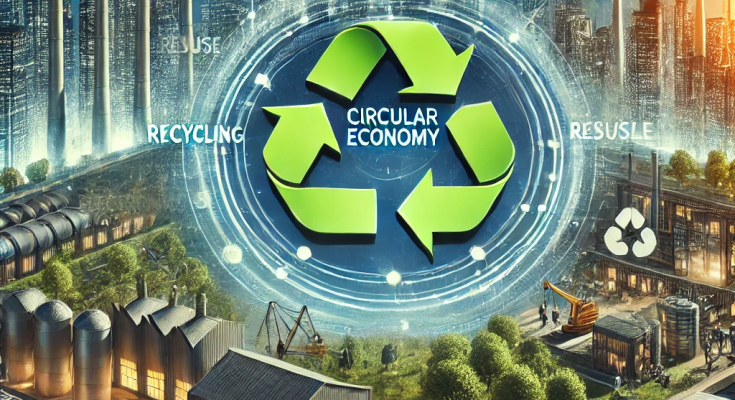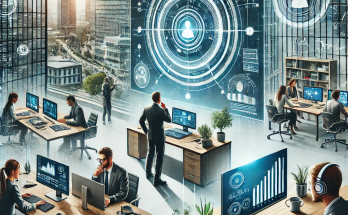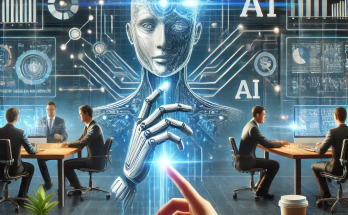Introduction
Sustainability has become a critical focus for businesses worldwide, with companies increasingly adopting circular economy principles to reduce waste, minimize environmental impact, and create long-term value.
Unlike the traditional linear economy—where products are made, used, and discarded—the circular economy emphasizes reuse, recycling, and sustainability to keep materials in circulation for as long as possible.
From fashion and manufacturing to technology and consumer goods, businesses are rethinking product design, supply chains, and waste management to align with eco-conscious consumer demand and global sustainability goals.
This article explores the rise of the circular economy, key industry innovations, and how businesses can adapt to remain competitive in the sustainable future.
What is the Circular Economy?
The circular economy is a regenerative business model that focuses on:
♻️ Designing products for durability, repairability, and recyclability
♻️ Reducing waste through innovative material use and sustainable production
♻️ Extending product lifecycles through resale, refurbishment, and upcycling
♻️ Minimizing resource consumption by reusing materials
Instead of the traditional “take, make, waste” system, the circular economy promotes a closed-loop system that benefits businesses, consumers, and the environment.
How Businesses Are Embracing the Circular Economy
1. Sustainable Product Design & Material Innovation
Companies are rethinking product design to reduce environmental impact from the start.
• Using biodegradable materials instead of plastics.
• Developing modular products that can be easily repaired or upgraded.
• Integrating recycled materials into new product lines.
💡 Example: Adidas has introduced fully recyclable running shoes, made from a single material that can be broken down and reused.
2. Extended Product Lifecycles: Resale & Repair Programs
Major brands are offering repair and resale programs to extend product lifespans, reduce waste, and engage eco-conscious consumers.
• Fashion brands like Patagonia & Levi’s offer repair services and second-hand clothing sales.
• Tech companies like Apple & Dell promote device trade-in and refurbishment programs.
• Furniture companies like IKEA now accept old furniture for refurbishment and resale.
💡 Example: Apple’s Certified Refurbished Program resells pre-owned devices with warranties, reducing e-waste and promoting a circular business model.
3. Recycling & Waste Reduction Innovations
Businesses are investing in waste-free supply chains and closed-loop recycling systems:
• Food & beverage companies are transitioning to compostable packaging and edible alternatives.
• Automotive manufacturers are using recycled metals, batteries, and plastics in vehicle production.
• Electronics companies are developing e-waste recycling programs to recover precious materials.
💡 Example: Tesla recycles lithium-ion batteries from old electric vehicles, recovering materials like nickel, cobalt, and lithium for future battery production.
4. Circular Supply Chains & Zero-Waste Manufacturing
Companies are shifting toward circular supply chains, which involve:
🔄 Sourcing renewable materials instead of finite resources.
🔄 Using manufacturing byproducts to create new products.
🔄 Collaborating with suppliers who prioritize sustainability.
💡 Example: Unilever’s “Waste-Free World” initiative focuses on 100% recyclable or compostable packaging by 2030.
The Business Benefits of Circular Economy Practices
✅ Cost Savings & Efficiency – Recycling materials and extending product lifecycles reduce raw material costs.
✅ Competitive Advantage – Sustainable brands attract environmentally conscious consumers and investors.
✅ Stronger Brand Reputation – Companies that prioritize sustainability build customer loyalty and trust.
✅ Regulatory Compliance – Governments are introducing stricter environmental laws that favor circular business models.
✅ Revenue Growth Opportunities – The resale, refurbishment, and recycling markets are expanding rapidly.
Challenges in Adopting the Circular Economy
Despite its benefits, transitioning to a circular economy comes with challenges:
⚠️ High Initial Investment – Developing recycling programs, sustainable materials, and closed-loop systems requires significant capital.
⚠️ Consumer Behavior & Adoption – Educating consumers about reuse, recycling, and sustainable purchasing is essential.
⚠️ Supply Chain Adjustments – Businesses must rethink supplier partnerships and logistics to support sustainability goals.
⚠️ Regulatory Variability – Different regions have varying recycling laws and environmental regulations, complicating global operations.
Overcoming these challenges requires innovation, collaboration, and long-term commitment.
The Future of the Circular Economy in Business
🌍 Sustainability Regulations Will Increase – Governments will enforce stricter circular economy policies.
🌍 AI & IoT Will Optimize Resource Management – Smart technologies will track, sort, and recycle materials efficiently.
🌍 More Brands Will Adopt Rental & Subscription Models – Companies will shift toward leasing products instead of selling them, extending product lifecycles.
🌍 Consumers Will Demand Greater Transparency – Businesses will need to prove sustainability claims through certifications and data-driven reporting.
The businesses that lead in circular economy innovation will gain a competitive edge, build consumer trust, and drive industry-wide change.
The shift toward a circular economy is no longer optional—it’s becoming a necessity for long-term business success.
Key Takeaways:
• Businesses are prioritizing sustainability through recycling, reuse, and waste reduction.
• Major brands like Apple, Patagonia, and Tesla are leading circular economy innovations.
• Sustainable practices offer cost savings, regulatory compliance, and stronger brand loyalty.
• Challenges like high costs and supply chain adaptation require long-term investment and commitment.
• Future trends will see AI-driven waste management, increased sustainability regulations, and new business models focused on reuse.
By embracing circular economy principles, businesses can reduce environmental impact, create economic value, and build a more sustainable future for generations to come.


